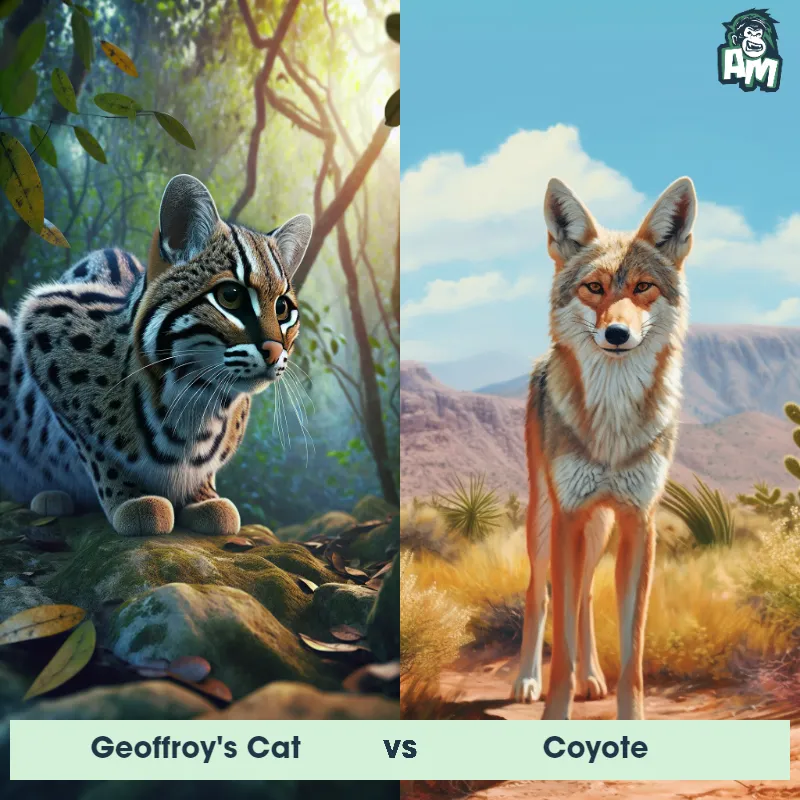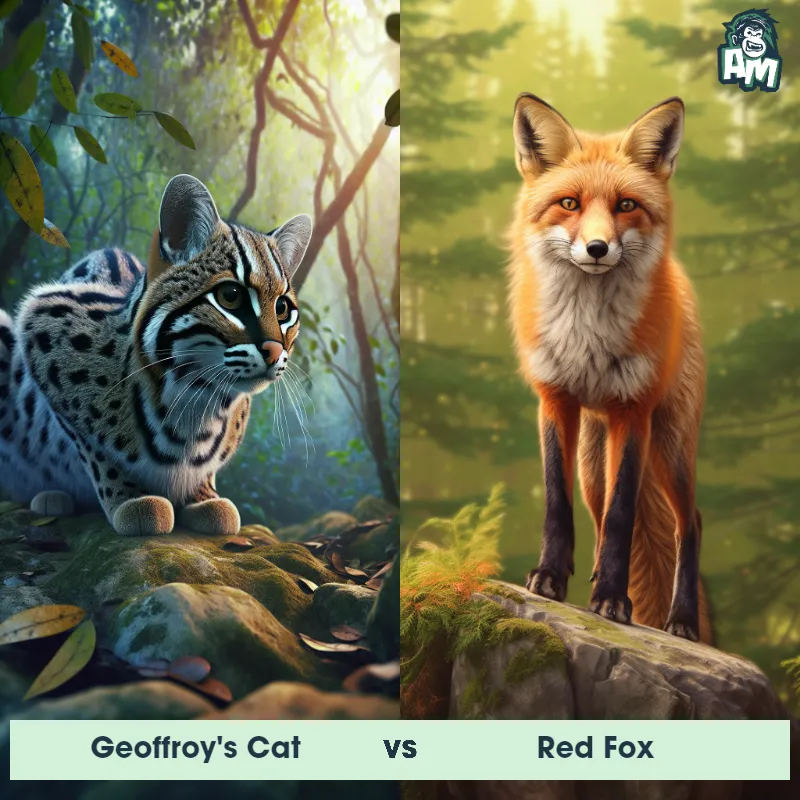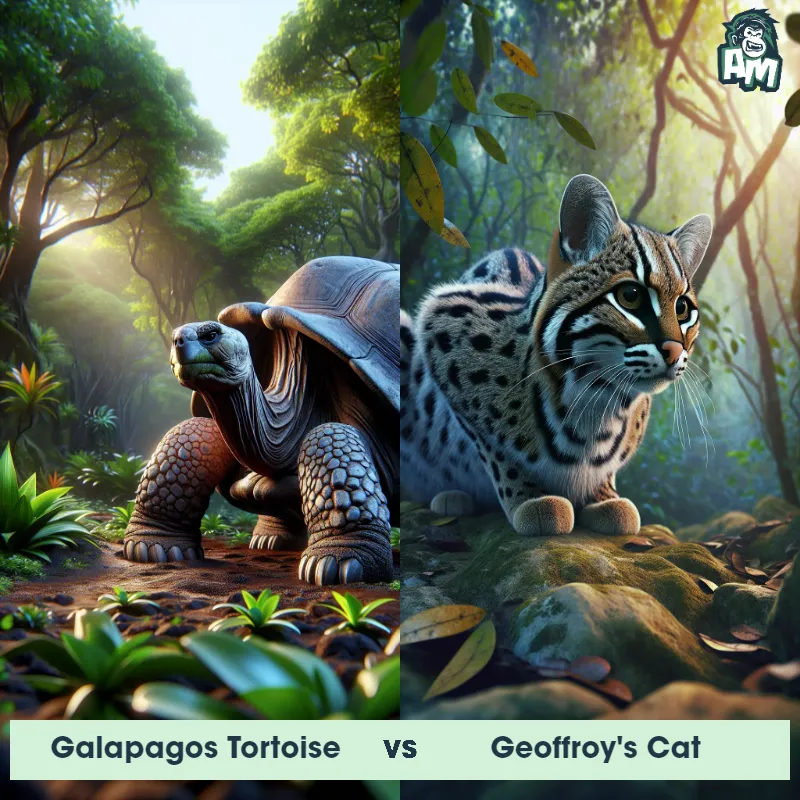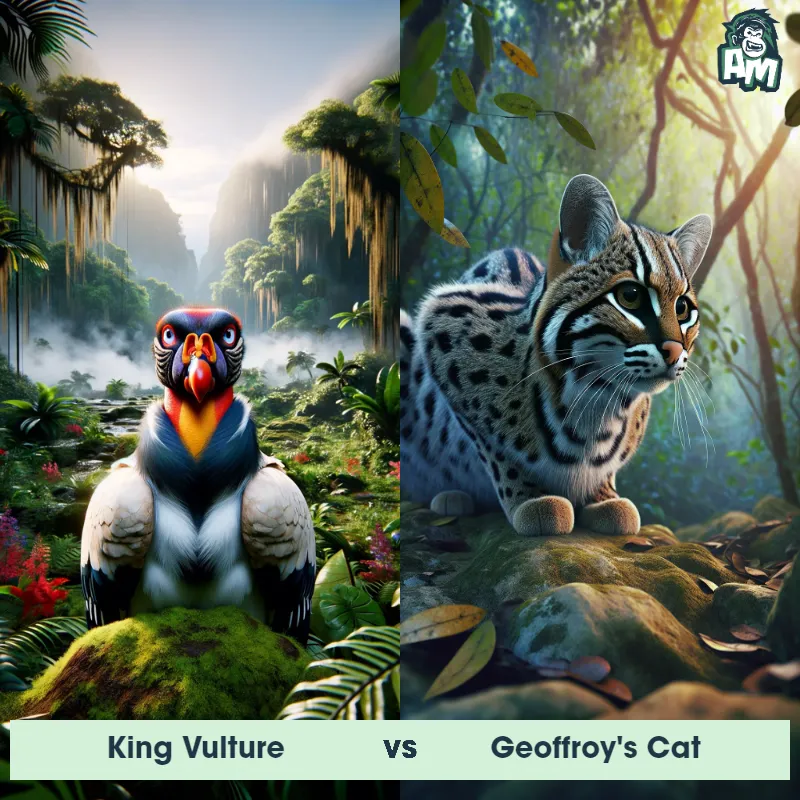The Geoffroy's Cat
Geoffroy's Cat, scientifically known as Leopardus geoffroyi, is a small wild cat species native to South America, particularly found in the countries of Argentina, Bolivia, Chile, and Uruguay. These cats are known for their unique coloration and markings, with a coat that is typically sandy or grayish-brown, covered in small dark spots and stripes. They have a slender body with short legs and a relatively small head, equipped with sharp retractable claws. Geoffroy's Cats are opportunistic hunters, feeding on a variety of prey including small mammals, birds, and reptiles. They are solitary and elusive animals, primarily active during the night.

| Geoffroy's Cat | |
|---|---|
| Size | 16-20 inches (40-50 cm) at the shoulder |
| Weight | 4-8 pounds (1.8-3.6 kilograms) |
| Speed | 20 mph (32 km/h) |
| Key Strength | Agility and speed |
| Biggest Weakness | Relatively small size and limited self-defense abilities |
| Scientific Name | Leopardus geoffroyi |
| Family | Felidae |
| Habitat | Forests, grasslands, and scrublands |
| Geography | South America |
| Diet | Small mammals, birds, reptiles, and occasionally fish |
| Lifespan | 10 years - 15 years |

The Geoffroy's Cat
Geoffroy's Cat, scientifically known as Leopardus geoffroyi, is a small wild cat species native to South America, particularly found in the countries of Argentina, Bolivia, Chile, and Uruguay. These cats are known for their unique coloration and markings, with a coat that is typically sandy or grayish-brown, covered in small dark spots and stripes. They have a slender body with short legs and a relatively small head, equipped with sharp retractable claws. Geoffroy's Cats are opportunistic hunters, feeding on a variety of prey including small mammals, birds, and reptiles. They are solitary and elusive animals, primarily active during the night.
Fun Fact: One fun fact about Geoffroy's Cat is that despite their small size, they are capable of bringing down prey that is much larger than themselves, including animals like rabbits and young deer.
| Geoffroy's Cat | |
|---|---|
| Size | 16-20 inches (40-50 cm) at the shoulder |
| Weight | 4-8 pounds (1.8-3.6 kilograms) |
| Speed | 20 mph (32 km/h) |
| Key Strength | Agility and speed |
| Biggest Weakness | Relatively small size and limited self-defense abilities |
| Scientific Name | Leopardus geoffroyi |
| Family | Felidae |
| Habitat | Forests, grasslands, and scrublands |
| Geography | South America |
| Diet | Small mammals, birds, reptiles, and occasionally fish |
| Lifespan | 10 years - 15 years |
Geoffroy's Cat Matchups
We use AI to simulate matchups between the Geoffroy's Cat and other animals. Our simulation considers size, strength, and natural predatory behaviors to determine the most likely outcome.
Geoffroy's Cat: Diet, Predators, Aggression, and Defensive Behaviors
What do Geoffroy's Cats eat?
Geoffroy's Cats are carnivores, with the majority of their diet consisting of small mammals like rodents, birds, and insects. Geoffroy's Cat will also consume reptiles and amphibians when available. Occasionally, Geoffroy's Cat may prey on larger animals such as rabbits or young deer.
Do Geoffroy's Cats have any predators?
Although Geoffroy's Cats are skilled hunters and agile climbers, Geoffroy's Cat do have predators in the wild. Larger predators like jaguars, pumas, and birds of prey such as eagles may pose a threat to Geoffroy's Cats, especially the young or smaller individuals.
Are Geoffroy's Cats aggressive?
Geoffroy's Cats are mostly solitary and territorial animals, so Geoffroy's Cat can display aggressive behavior towards intruders or threats to their territory. However, Geoffroy's Cat are generally shy and elusive in nature, preferring to avoid confrontations whenever possible.
Do Geoffroy's Cats fight?
Geoffroy's Cats may engage in fights, typically when defending their territory or competing for food or mates. Geoffroy's Cat are known to growl, hiss, and even physically attack one another in these situations. However, fights are usually brief and resolve quickly.
How do Geoffroy's Cats defend themselves?
When faced with a threat, Geoffroy's Cats can defend themselves in various ways. Geoffroy's Cat may arch their backs, raise their fur, growl, hiss, and even spit to make themselves appear larger and more intimidating. If necessary, Geoffroy's Cat will use their sharp claws and teeth to fight off attackers.
What is Geoffroy's Cats' biggest weakness in a fight?
Despite their agility and hunting skills, Geoffroy's Cats are relatively small in size compared to some of their predators. This physical disadvantage can be a weakness in a fight, especially when facing larger and more powerful animals. Consequently, Geoffroy's Cats rely on their speed, agility, and sharp senses to avoid dangerous situations whenever possible.
Fun Fact: Another interesting fact about Geoffroy's Cat is that they are skilled climbers and are often seen perching on trees, where they can survey their surroundings and spot potential prey.
Fun Fact: Geoffroy's Cats have a unique hunting technique that involves leaping into the air to catch flying birds, making them one of the few wild cat species known to engage in such behavior.


















